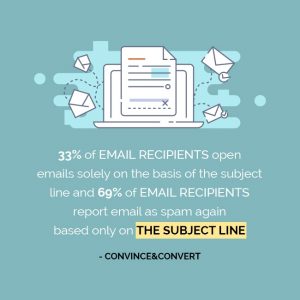
Are your agency’s PMs “professional babysitters”? Yes and no; let’s explore.
A coaching client wrote: “I’ve always seen project managers as glorified babysitters. Why do agency employees need a ‘professional babysitter’ to tell them what to do at work?”
A few months earlier, he’d noted: “I feel like [PMs] are ‘work babysitters’ and people should be adults about completing what they committed to do.”
Having been an agency PM on six-figure projects, I’d say his self-management assumption is good in theory… but hard in practice.
How so? Your employees aren’t children (aside from a former coworker—the senior developer who threw a temper tantrum on a conference call), yet we all benefit from someone helping us stay on track.
So, are your PMs “professional babysitters”? Yes and no. Let’s explore!
Are your agency’s project managers “professional babysitters”?
Yes and no. Consider:
- Yes, in that it’s hard to do the work and manage the work at the same time. Even high performers benefit from someone helping them stay on track. (I know I benefit from my team’s help… and I’ve been a PM before.)
- No, in that your employees shouldn’t require constant supervision and oversight. They shouldn’t struggle at the basic functions of their job. (This “baseline” may evolve over time.)
You can’t expect employees to act like owners 100% of the time, but it’s reasonable to expect them to typically act on behalf of the company’s best interests.
Can employees “babysit” themselves?
Maybe, but probably not. If an employee is handling 1-3 clients at once, they can theoretically manage themselves. But as soon as you need people to juggle more projects, things tend to slip. That’s where having a project manager comes in handy—the PM is a level removed from the day-to-day execution, which gives them “altitude” to consider how the entire engagement fits together.
Task complexity is a factor, too. For example, dev shops and other technically-oriented agencies tend to have PMs, because there are so many moving parts.
Agencies doing less-complex work are likely to combine project management (PM) with account management (AM) and/or a subject matter expert (SME) role. For more on this, see my article on agency team structure and roles.
Is “professional babysitting” really so bad at an agency?
It depends on how you define “professional babysitter.”
- If it’s someone who helps employees stay on track while managing complex client engagements… that sounds like a good thing. (It’s about a multiplier effect, to enable productivity and job satisfaction.)
- If it’s someone who needs to constantly remind employees about doing things throughout the day… that sounds like a bad thing. (For instance, the agency owner who told me how they put an employee’s desk next to theirs, so they could monitor if the employee was working.)
Last year, an agency owner complained to me that one of his directors wasn’t checking the master calendar before saying “yes” to clients on deadlines. I asked who maintained the master calendar. Turns out… there wasn’t really a master calendar. OK, fix that first!
Technology isn’t an automatic solution, but it doesn’t hurt—especially when it comes to visibility into what’s happening per employee, per client, and agency-wide. See my advice on PM software selection. If you don’t have any software, that’s a problem—like when an agency owner complained that his account managers didn’t check the master schedule. It turns out… there was no master schedule.
What turns a PM into a professional babysitter?
Here are reasons why your project managers might feel the need to become “work babysitters”:
- You have lots of Wet Twine employees on the team, and not enough New Rope employees.
- You’re expecting a Project Coordinator to function as a full PM, or have otherwise mismatched PM levels.
- You have a lot of “reluctant employees” who don’t want to do the job you need them to do.
- There’s a lot of employee drama at your agency, and PMs keep getting dragged into things as mediators.
- Employees aren’t clear on the Values, Goals, and Resources (VGR) to follow on a client- and agency-level.
- You haven’t defined Swim Lanes, and people are stepping over each other.
- No one’s in charge of agency-wide “traffic” (PM portfolio scheduling) decisions, so everyone’s double-booking SMEs and otherwise fighting over resources.
- The agency has outgrown its current PM software, but you haven’t switched to a new PM system yet.
- Clients demand more support than they’re paying to receive, which leads to over-stressing your team.
Thinking about your agency, what would you add to the list?
How do you ensure your PMs don’t need to become work babysitters?
Want to start fixing the problem? See how you measure up on these factors:
- Ensure you hire solely New Rope employees, and don’t tolerate Wet Twine or “reluctant employees.”
- Hire PMs who can function at the level of PM expertise you require, and be sure you’re on the right PM system for your current and upcoming needs.
- Define Swim Lanes—including who “owns” agency-wide traffic/resourcing decisions—and get clear on agency- and client-level Values, Goals, and Resources (VGR).
- As the “dictator” of your agency, stop tolerating drama… and read my book Made to Lead: A Pocket Guide to Managing Marketing & Creative Teams.
- Charge clients for what they get, stop allowing scope creep, and stop responding instantly to every request.
Don’t have PMs on your team today? In a future article, I’ll explore whether every agency needs project managers. (Answer: Most do.)
Question: How do you avoid the “professional babysitter” situation with your agency’s PMs?
Business & Finance Articles on Business 2 Community
(69)








